Total Suspended Solids (TSS Meter) – SoliSense®
How do you measure from low NTU all the way up to 8% solids? By using the SoliSense® from Pi. Using patented optical technology the self-cleaning, simple to use, low drift TSS meter from Pi is a cost-effective way of measuring the solids in a range of applications including all those associated with municipal wastewater plants and municipal water plants such as mixed liquor suspended solids (MLSS), return activated sludge (RAS), plant inlet and plant outlet, centrate, filter backwash and other monitoring requirements. Because of its patented technology that allows it to measure such a large range in a single sensor, the SoliSense® TSS meter has integrated self-cleaning for a long maintenance intervals, with calibration checking as little as once per year. Installation can be dipping into a tank or inserting into a pipe, or at line is a flow cell.
SoliSense® Suspended Solids Meter 3D View
- From 2 NTU to 8% Solids
- Displays in NTU, mg/l, g/l or % solids – flexible
- AutoClean optical sensor – months or years without maintenance
- Stable and reliable – excellent process control
- Suitable for all potable, waste and process waters
- Up to 12 months between maintenance
- Up to 12 months between calibration
- TSS meter
The patented technology in the SoliSense® means that a single sensor can cover a very large range. This means that you don’t need to have so many different sensors across a water treatment works (WTW) or wastewater treatment works (WWTW). This in turn means;
- Fewer spares – need to be held across one or more plants
- No requirement to know the range before ordering – easier purchasing
- One online TSS meter can be an:
- MLSS meter
- TSS meter
- Online total suspended solids meter
- Online effluent monitor
- Online inlet monitor
- Online ‘in process’ suspended solids analyzer
The SoliSense® TSS meter has been designed to be suitable for all suspended solids monitoring applications in both water treatment works and wastewater works including:
- Inlet monitoring (turbidity 2-4,000 NTU)
- Effluent monitoring (suspended solids 0-1,000 mg/l)
- Online TSS meter
- Online RAS meter (Return Activated Sludge)
- Online MLSS meter (Mixed Liquor Suspended Solids)
- Online WAS meter (Waste Activated Sludge)
- Thickened sludge – Online total suspended solids meter
- Centrate – Online total suspended solids meter
- Filtrate – Online total suspended solids meter
- Backwash water – For control of filter backwashing on a water treatment plant
- Wastewater effluent – Online total suspended solids meter
- Wastewater influent – Online total suspended solids meter
The SoliSense® TSS meter can come with several installation options including;
- Dip – where the sensor is mounted on the end of a pole that dips it into a tank or open body of water
- Insertion – where the sensor is inserted into a pipe through a special ball valve that allows the sensor to be removed while still under pressure
- Flow cell – where the sensor is mounted in a specialist flow cell and the sample flows through it.
To learn more please scroll down and download the brochure or contact us to discuss the best option for your application.
Each sensor has an LED light source that emits in the infra-red and has a working lifetime of 15 years. Each TSS sensor has two detectors.
The light emitted is detected by the emitter detector. That light then goes through the sapphire optical windows and into the sample. With refraction and reflection, some light comes back into the sensor to the detector, which is at 120 degrees to the emitted light, and the ratio of the emitted light to the received light is proportional to the suspended solids in the sample. By varying the amount of light that is outputting the sensor can correct for effects introduced by, for example, the optical properties of the windows or aging optics or drifting electronics (all electronics drift). It is this technique that has been patented and provides for the stability and range of the SoliSense®.
The electronics provide a fully scalable output allowing the SoliSense® to measure any part, or the whole, of the scale. The sensor probe comes equipped with the capability of having a water jet regularly sweep over the optical lenses keeping them clean. If you have an application that ranges from low NTU all the way to %age solids then the SoliSense® is certainly the TSS for you! With up to 5 calibration points you can accurately monitor your process across a wide range of sample concentrations.
The probes are constructed of 316 stainless steel with sapphire optical windows, so can withstand demanding operating environments.
By using two detectors in a single probe it is possible to:
- Measure turbidity from 2 NTU to 4,000 NTU
- Measure solids from 0.001 to 80 g/l (8% solids) – Sludge
- Measure solids from 0.001 to 500 g/l (50% solids) – Silicates
Focus Ons are a series of short articles distributed by email providing technical information regarding instrumentation, process measurement in potable, waste, process and pool waters. If you would like to join the mailing list, please contact us.
| Document | Type | Size |
|---|---|---|
| SoliSense® | Brochure | 680kB |
| Total Suspended Solids Measurement – SoliSense® | Article | 592kB |
| Measurement of Suspended Solids | Technical Note | 742kB |
| SoliSense® for TSS Monitoring | Technical Note | 753kB |
| SoliSense® Mounting Options | Technical Note | 686kB |
| Probe Fouling | Technical Note | 459kB |
FAQs
What does 'Suspended Solids' mean?
Suspended solids are particles suspended in water. They occur naturally and can be seen for example in rivers after a rainfall event when the river appears ‘muddy’.
Why should I measure Suspended Solids?
Treating water and wastewater has two main focuses: the removal of organics and particles, and then disinfection. Having information about the level of suspended solids can be invaluable in informing treatment processes (such as tracking changes in suspended solids in raw water entering a drinking water plant or monitoring the efficacy wastewater at the outlet), and so these kinds of sensors are very common in many industries and applications.
What unit of measurement is preferred when measuring Suspended Solids?
Suspended solids are generally measured in mg/l. Sometimes, if they are present in large amounts, a percentage is used or g/l.
What is the difference between Suspended Solids and Turbidity?
Suspended solids and turbidity are measured differently, but they are related. Suspended solids measurements are based on the mass of solids present in a certain volume of water (mg/l), whereas turbidity is measuring how ‘cloudy’ it is in NTU. A common conversion used is 1mg/l = 2 NTU, but different suspended materials can have a different relationship.
Is there a maximum level of solids that can be measured by the SoliSense®?
The qualities of the process water and the solids to be measured will affect the effective maximum level that can be measured. For a ‘clean’ application (such as silica in clean water), we could expect to be able to measure up to 50% solids (500,000 mg/l) reliably. On the opposite side of the spectrum, black sludge in a wastewater plant may have a reliable limit as low as 5% (50,000 mg/l). Experience shows that in most wastewater works the upper limit is around 8% solids (80,000 mg/l).
If the temperature varies, what will happen?
"The Pi products provide excellent value for money and represent the best municipal drinking water analyzers available."
John Clark
Chemtrac - Atlanta
"The support from Pi and its partners is superb. They go above and beyond to ensure that, not only is their equipment perfect but that the process is working great too. Five Stars!"
Anthony Glitto
Equip Solutions - Illinois, USA
"Going from ORP control to amperometric chlorine sensor control has undoubtedly improved the pool water immensely!"
Chris Tedeschi
Link Automation - USA
"We've been using these analyzers since 2008. They're easy to use and very stable. Calibration and maintenance is quick and simple."
Lloyd Gruginski
Chehalis WTP - Chehalis, WA
"We at Scottish Water have been using the excellent Pi LabSense 3 and portable UV254 instruments in the field for optimizing our Water Treatment processes for some years now. We find them easy to use and invaluable for detecting and resolving issues in a timely, efficient and effective manner. Two great pieces of kit!”
Paul Weir
Scottish Water - UK
"I want to thank you and all at Process Instruments for all the assistance, information and handholding during the year. The help that was so freely given was very much appreciated. Can you please extend my appreciation to all at Pi and let me wish you all a happy, safe and wonderful Christmas and I look forward to working with you again in 2021."
Michael Bailey
Wexford Co. Co. - Ireland
"Excellent level of support and always so much more prompt than a lot of our suppliers."
Phill Tuxford
Detectronic - UK
"The plant can’t produce good quality water without the CoagSense."
Mick Murphy
Wexford Co. Co. - Ireland
"We started using Process Instruments 10 years ago and they worked so well that when we were looking at expanding, Process Instruments were our "go to" company."
Rebecca - Pool Manager
Woodland Spa - Burnley, UK
"We've been installing pools and spa controllers from Pi for more than 10 years and they just are the best on the market."
Dr. Lester Symmonds
Pool Sentry - UK
"We've used the CRIUS® with chlorine, pH and conductivity sensors for several years and confirm quality, performance and reliability has been wholly satisfactory to date."
David Kerr
Karis Technical Services Ltd. - UK
"We in ECM ECO Monitoring can only recommend Process Instruments products and services to all other potential clients. They have very complex portfolio of products for water quality monitoring in various types of industries, friendly attitude, very quick delivery time and prompt reaction to all our needs and inquires. Our clients especially appreciate the particle counters and sizers allowing identification of drinking water treatment problems. The Streaming Current Monitors are a great tool for optimisation of expensive chemicals.”
Branislav
ECM ECO Monitoring - Slovakia
"Simply the best turbidity available."
John Clark
Chemtrac - Atlanta, GA
"In 2019, we purchased 29 particle counters which were installed in our water plants. So far, their performance has been perfect."
Li Yongjun
Jinan Hongquan Water Company - China
"We have installed hundreds of ozone analyzers from Pi over the years. They are just accurate, reliable and require low maintenance."
Jiao Tumei
Qingdao Guolin Environmental Technology Co., Ltd., - China
"Over the last few years we've purchased chlorine and turbidity analyzers from Chemtrac and with routine calibration the probes measure the chlorine and turbidity without any issue. We are very happy with this product and would highly recommend them."
Daniel "Buck" Owen
Ocoee Utility District - Ocoee TN
“Servicing customers is much more than just solving problems or addressing complaints and Pi does that very competently with technical and quick efforts providing a good experience."
Clovis Tuchapski
Buckman - Latin America
"Pi's technical team has enabled us to be one step ahead of our competitors by adding value to our projects thanks to their fast and excellent support from the moment you first reach out.
Ibrahim Kaplin
Thermomed - Turkey
"The Streaming Current Monitor from Pi is the best SCM I have ever used. The analyser responds quickly and has many powerful functions, which helps me save a lot of money."
Ye Yancong
Xiamen Xishan Water Plant - China
“Process Instruments has a broad range of high quality and user-friendly solutions for water-industry problems. The short lead times and great customer support make Pi a reliable partner.”
Péter Szabó
SC KATALIN NOHSE CHIMIST IMPORT SRL - Romania
"Process Instruments UK always have a high level of customer service. All our interactions with Pi have exceeded our expectations. It is always a pleasure working with you.”
Iñaki Seisdedos Rodríguez
Izasa Scientific - Spain
"Process Instruments UK always have a high level of customer service. All our interactions with Pi have exceeded our expectations. It is always a pleasure working with you.”
Rudi Tuffek
Allpronix - South Africa









